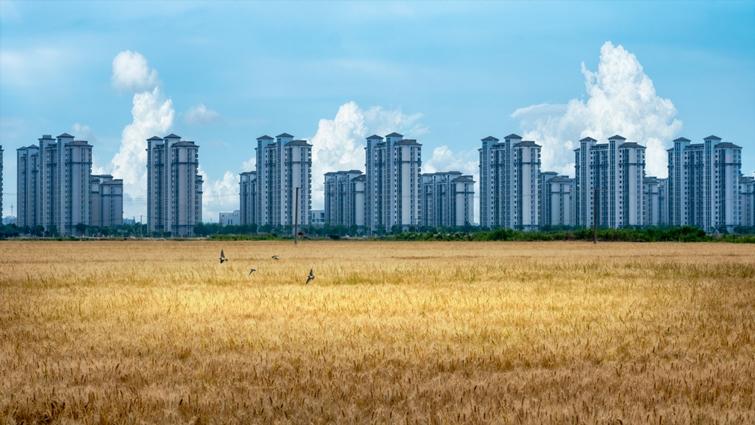Professor Liu Jing – Professor of Accounting and Finance, Director of Investment Research Center, CKGSB
Since the beginning of 2022, the real estate giant Evergrande has repeatedly reported failed overdue coupon payments. The crisis started in September 2021 when the company first announced it was facing unprecedented difficulties, which in response to the Chinese government had to move in to control the spillover effects. While the Evergrande crisis is directly related to its own internal management problems, the company’s crisis is just the tip of the iceberg: what lies behind it is a liquidity crisis that has affected the entire real estate industry.
This liquidity crises was triggered by the “Three Red Lines” regulatory requirements introduced in August 2020. They stipulated that real estate companies must have:
- A liability to asset ratio of less than 70%.
- A net gearing ratio (debt-equity divided by shareholders’ equity) of less than 100%.
- A cash to short-term borrowing ratio of at least 1.
The “Three Red Lines” were set up as a framework to deleverage the real estate industry, whereby the more leveraged a company was, the more they had to reduce their outstanding debt. Deleveraging was also imposed on banks to reduce the loans they could provide for property purchases. However, it was applied on such a large scale that it caused real estate industry to fall into a liquidity crisis.
After carrying out an analysis on the liabilities of mainland property companies listed on Mainland and Hong Kong stock exchanges, we found out that the majority of them had crossed at least one of the “Three Red Lines”.
In 2020, the average liability to asset ratio of real estate companies listed on these markets was approximately 75% and the net gearing ratio 1.4 – which were both outside the guidelines. Only the average cash to short-term borrowings ratio of 1.3 stayed within the guidelines.
As investors saw this situation, the majority were unwilling to buy up the stocks of these companies. Banks and financial institutions made the same judgment, and as a result it became increasingly difficult for property companies to obtain debt and equity financing.
Consumer activity subsequently cooled which brought transactions in the real estate market to almost a standstill. The result was a complete market freeze, reminiscent of the subprime mortgage crisis of 2008.
In the third quarter of 2021, land designated for commercial new builds across the country shrunk by -6% year-on-year. Today, this downward trend is still in full swing, rising to 17.5% in the first quarter of 2022.
The Logic Behind the “Three Red Lines” Regulations
Real estate plays a fundamental role in China’s economy, accounting for 30% of GDP considering sectors both upstream and downstream.
Moreover, demand for real estate stems from two factors: urbanization and rising consumer demand. The rate of urbanization in China increased from 29% to 65% from 1995 to 2021. In comparison, it took 70 years for the United States to increase its urbanization rate from 28.6% to 64%, 73 years for France’s to rise from 26% to 65% and 60 years for Germany’s to increase from 28% to 68%.
In the next ten to twenty years, urbanization will play a key role in China’s economic development – if Chinas increases its rate of urbanization by 10 percentage points in the next ten years, that would result in another 140 million people moving to cities. This would require an additional 5 billion square meters of urban housing.

Rise in consumption is another significant factor contributing to real estate demand. As the economy and personal income grow, demand for housing in urban areas also rises.
From 1995 to 2020, China’s average house size rose from 16 square meters to 40 square meters (increasing by one square meter per year). Despite this rise, there is still a lot of room for improvement.
China’s population density is 148 people per square kilometer. In comparison, in Japan it is 348 people per square kilometer with an average living area of 35 square meters. South Korea has a higher population density of 528 people per square kilometer and a per capita living area of 34 square meters. Germany has a population density of 237 people per square kilometer, twice that of China, with a per capita living area of 43 square meters. Singapore’s population density is as high as 7916 people per square kilometer and a per capita living are of 38 square meters.
In the future, if the average household size in China increases by 10 square meters, there will be an additional 14 billion square meters of housing. However, with an increasing rate of urbanization and rising consumption, it will not be demand but prices that will be the problem.
The average price-to-income ratio in China’s 50 cities was 13.4 in 2020 (house prices were 13.4 times the prices of average income), according to estimates by Shanghai E-House Real Estate Research Institute. In first-tier cities it was as high as 26.6, and in second-tier and third-tier cities around 12.
In 2021, the price-to-income ratio in the United States was lower at 7.4. This has risen from the average of 6.4 before the financial crisis. U.S prices are extremely high, but if you compare these prices to personal income, China’s house prices are twice that of the United States.
High property prices not only slow down the process of urbanization by deterring those who come to cities in search of work, it also has a crowding-out effect on consumption, reduces the spending power of low- and middle-income groups and increases the gap between the rich and the poor.
Since real estaet is a heavy asset, both companies and consumers will end up highly leveraged. This leverage is exacerbated by high house prices, which causes leads to large amounts of debt and the potential for a financial crisis.

So why have house prices in Chinese cities and towns become so high? The answer complex but at the root of the problem is the imbalance between supply and demand.
The other significant factor is real estate speculation. According to the “2019 Survey on Assets and Liabilities of Urban Households in China” released by the People’s Bank of China, property is the most important household asset in China, accounting for approximately 60% of total household assets. As prices continue to rise rapidly, investment and speculation have become a way for the common people to accumulate large amounts of wealth.
To prevent house prices from continuing to rise, regulators introduced the “houses are for living in, not speculation” policy, with the aim to prevent this speculative behavior.
To read the next article in the series, head to the article below: 2. “The Role of Real Estate Companies”.






















